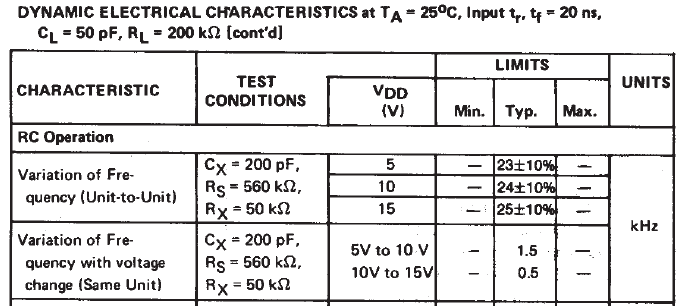Hello,
on page 4 of the datasheet there is information about the variation of frequency (unit-to-unit).
For example, with Cx=200pF, Rx=50k, the resulting oscillation frequency according to formula on page 3 would be 1/(2.2*Rx*Cx) = 45.455kHz.
The table states for Vdd=5V a variation of 23 +/-10% kHz.
I do not assume that there is 23kHz variation at a nominal frequency of 45kHz.
How are the values in the table to be understood?


